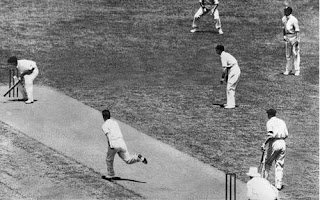Features
Published on December 9th, 2012 | by Hector Reid
The Planet Ivy pocket guide to the British sense of humour
Of all the traits that Brits are ascribed all around the world, a good and complex sense of humour is probably the best-known and most favourably regarded. From P.G. Wodehouse to Private Eye, Sid James to BoJo, Del Boy to David Brent, The Goon Show to Monty Python, Brits have always enjoyed and cultivated a nuanced, ’British’ sense of humour. For many Britons, it’s the cornerstone of a collective national personality, and for those on the outside, it’s a thing of fascination and, in some cases, mystery.
British comedy is in a golden age that has seen few signs of waning since the 1960s. John Cleese, whose starring role in 1970s sitcom Fawlty Towers – named best British television series of all time by the British Film Institute – was a high point, put it like this: “In the 60s, 70s and 80s, we did have the least bad television in the world, and that’s quite a claim.” Not bad for a small, wet and outwardly humourless island containing less than 1% of the people on earth. It’s not just television, either – for its size, Britain churns out a remarkable amount of world-class stand-ups, humorous radio shows, writers, films and magazines.

British humour is often too subtle for outsiders to understand.
But what makes this country spawn so much comedy? Is it necessitated by the bleak, damp days and polite, conservative society? And what makes our collective sense of humour so, well, British? Stephanie Merritt, in the Observer nearly ten years ago, mused about the dangers of analysing comedy, “how do you achieve that fine balance between writing about humour with humour while not looking as if you’re setting out to compete with the people about whom you’re writing, and the other extreme of reducing what ought to be spontaneous and indefinable to a series of po-faced academic formulae?” In the face of this expert advice, and for our readers domestic and international, here is a look at the inner workings of the peculiar British comedic psyche.
The building blocks of the British sense of humour
Finding fun in the everyday
The Adventures of Adrian Mole, Bridget Jones’ Diary, Peep Show – the British just love the foibles and quirks of everyday life, and the humour inherent in it. We are constantly taken in by the charm of normality, of self-identification with the people on screen – but not in their aspirations to become President, a professional dancer or boy wizard, rather in their idiosyncrasies, anxieties, awkwardness and humanity. In quintessentially British self-effacement, we see ourselves in the unfortunate characters on screen, but rather than cry at the realisation, we laugh.
Satire and parody
This is a country where just about everything is fair game for a send-up, including – and especially – ourselves. The spoof, the pastiche, the parody, they all find welcome home on Britain’s shores. The popularity of satirical panel shows like Have I Got News For You and Mock The Week, typified by irreverent attitudes to the establishment and authority, and political satire like The Thick Of It, is emblematic of a society that peers through the mists of celebrity and says ‘hey, he’s just a bald old bastard like me, what’s so special about him?’.
The lovable rogue and the eccentric

He doesn’t even wear a belt.
We can’t help but have a soft spot for that lovable rogue. Whether it’s Del Boy, trying to sell watches out of his overcoat in Peckham, or Jay from the Inbetweeners shouting ‘bus wankers!’ out of the window of a Fiat Cinquecento, they’re a mirror for our own irreverence and we like that.
Similarly, we’re an eccentric nation and appreciate a bit of quirkiness in our representatives too. If you can name me any country in the world where a man like Boris Johnson would be not just wearing a suit, but also mayor of a capital city and enjoying near-mythical levels of popularity, I’ll eat my bowler.
Social awkwardness
If you’ve ever gone for the normal handshake when he’s gone for the manly, gladiatorial handclasp, or even the fist bump, you’ll know what this is about. Brits just love watching awkward situations unfold, even if it’s from behind a pillow. It probably stems from our own hyperawareness of social awkwardness, but we can’t get enough of it, whether it’s watching David Mitchell nervously call up his lady friend, Martin Freeman shuffle mutely away after getting a £1 kiss, or Miranda bumbling gracelessly through her terrible, terrible life, social awkwardness is part of the British national consciousness now and it isn’t going anywhere soon.
Surrealism and nonsense
Famously nonsensical British export Mr Bean is part of a dying breed with roots sunk deep in the silent film comedies of yesteryear. Still popular at Christmas time, when British families watch his disturbing, demented adventures and ponder how pleasingly eccentric we are as a nation, that we have created this manchild and set him loose on the world.
The bizarre is represented well in British comedy and comes from good stock – The Goon Show of the 1950s dealt in the ludicrous and the surreal, famous for its songs and pioneering sound effects.
Innuendo
Exemplified by the bawdy Carry On films, a saucy mix of music hall culture and seaside postcards (of the ‘Wish you were her’ variety), this pillar of British humour wasn’t simply an organ (geddit?) for sexy jokes, but a medium for poking fun in true British fashion at the establishment – whether it was the NHS, monarchy, the Empire, the military, trade unions or other film genres.
Say whatever you want, then follow it up immediately by playing this clip, and it’ll sound dirty.
Whimsy
While this final example isn’t technically British, his comedy is a perfect example of the last string in the bow of British humour. David O’Doherty, known for his ‘low-energy musical whimsy’, deals in playfully quaint, fanciful behaviour, usually through the medium of song accompanied by his small electronic keyboard. It’s difficult to imagine that what follows would be popular in many other areas of the world.
The British sense of humour is hard to pin down on a page. It is a curious mix of idiosyncrasies, lyrical wordplay and dry wit. Next time someone tells you that there is no British identity, remind them of our quirky national sense of humour. I mean, at least this is not our reality:
Two men in a club are reading their newspapers when one says: “It says here there’s a fellow in Devon who plays his cello to the seals.” “Oh really”, says the other. “Yes”, says the first, “Of course, they don’t take a blind bit of notice.”

































































